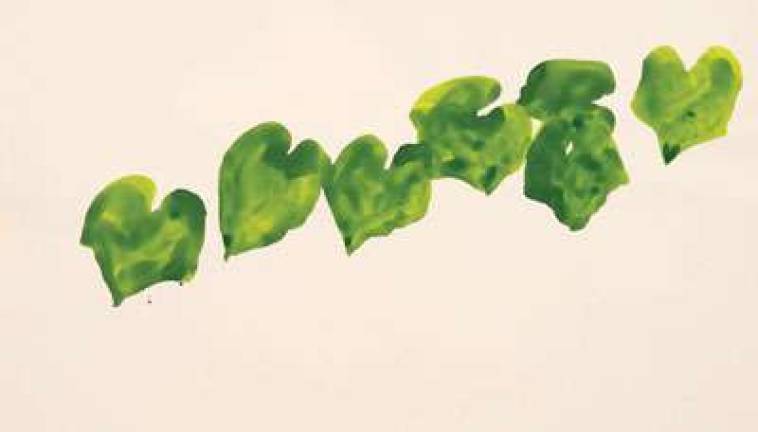Ellsworth Kelly's plane beauty At the Lexington Avenue and 53rd Street subway station, I was recently reminded of Ellsworth Kelly's excellence in the realm of public art. Even with stacks of newspapers piled against the left panel of a green/blue arc and Service Changes taped to companion panels, his work seemed oblivious to the intrusion and, like a Cage composition accepting chance, it soldiered cheerfully on. Like Cage, it is Kelly's acutely reductive sensibility at the intersection of abstraction and representation that makes his once uncomfortably "cool" classical simplicity now so accessible to the general public. The artist has long been able to nourish an aesthetic usually associated with European art of the '20s and '30s and in New York with the Steiglitz group. Applying objective observation to chance subject matter, he met both originators of the genre, Arp and Cage, during his Paris years, and through conversations with each, Kelly found "found." Closed contour drawing has been with us since the cave artists and continues as a tradition, but until medieval times, it depicted mainly humans and animals. Artists ignored the botanical world until plants acquired symbolic significance and the Renaissance brought forth studies of fruit and flowers as careful as those of anatomy. Excepting his early years, Arp's later work suffered from a surfeit of "art," and something similar applies to the current survey of Kelly's plant drawings. Encircling negative space with a deft contour line, the artist draws a blank so well that it feels more like a well-rehearsed performance than an attempt to describe what his eye sees. He does, however, acquaint us with another aspect of his ongoing concern: the plane in space and the planar aspect of a plant's structural response to light and gravity. In addition, Kelly refers to these drawings as portraits, and this writer feels that the portrait aspect applies as much to each individual specimen as it does to the many artists through whose eyes Kelly learned to resolve the tension between plane abstraction and the planar nature: Gauguin, Calder, O'Keeffe, Callahan, Léger, Matisse, Demuth, Mondrian and Hokusai, in addition to Arp and Cage. Seeing, and the representation of what is seen, are both learned and developed experiences. The charming page of apples that opens the exhibition is distinctly Gauguin, and the intricate vertical "Seaweed" (1949) is closely informed by Léger's holly leaves of 1928-30. "Sweetpea" (1960) and "Coral Leaf" (1987) float with the grace of Calder's constructions, and the wonderful back-side view of "Sunflower" (1983) is filled with da Vinci's hours in the Vatican garden. The calla lily is a signature motif in O'Keeffe's work, and Demuth's watercolors have echoes here as well. A complex meandering outline identifies a chrysanthemum with a nod to Mondrian and is emblematic of Kelly's method: to reduce and refine until only an essential image remains. As a whole, the works, curated by The Met's Marla Prather, bring us some memories of drawings from an era when art was modern. Ellsworth Kelly Plant Drawings Through Sept. 3, The Metropolitan Museum of Art, 1000 5th Ave., 212-535-7710, [metmuseum.org](http://www.metmuseum.org/).

